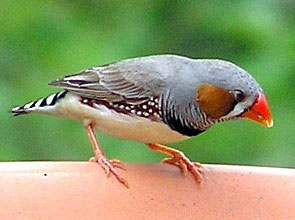This week offers 13 different FINE experiences for your enlightenment and enjoyment.
Deep Look: Australian walking stick insect [link]
Here is an exciting and interesting podcast about flowers that explode. The podcast interview lasts about 50 minutes. There’s even a movie! Well worth your time. [link]
When landscapes are abandoned, do butterflies flee? Agricultural intensification affects butterfly populations, but so does the abandonment of farmland. [link]
Resilience of crops confirms that drought alone did not cause a ‘collapse’ in Mayan civilization. In the 800s, Mayan cities in southeastern Mexico and Central America were abandoned – just as drought hit the region. But a botanical study shows that the connection between drought and depopulation was not simple. [link]
From Linda George: The gift shop in the Visitor Center at the Garden has a display case with fanciful creatures made from acorns and other natural materials. This link is a short movie featuring interactions between acorn fairies and actual birds. It’s fun! [link]
Two recommendations from Linda Chafin:
Saving old-growth trees (WAPO) [link]
Fires swept through a nature preserve with a managed forest and an adjacent, unmanaged forest in Oregon. Compare the side-by-side results. [link]
Life in a Wingstem stem. Take a look at all the critters that can inhabit the stem of a common fall-flowering plant. [link]
Chalk is made of the remains of unicellular, planktonic organisms in the oceans of the world. For shelter, each individual cell builds a protective house from ‘bricks’ it makes itself. And what beautiful bricks they are! This short piece tells you about these creatures and their importance in storing CO2. [link]
And peaking of chalk, a recent article in Nature suggests that variations in Earth’s orbit can affect the abundance of coccolithophores enough for them to actually cause alterations in the cycles of glaciation. [link]
Acorn weevil ‘snouts’ inspire strong materials that are simultaneously flexible. [link]
What’s in a name? Kathy Keeler, at A Wandering Botanist, ruminates over what we should call the Poinsettia. [link]
In 1629, the Batavia, a ship of the Dutch East India Company, met disaster off the coast of Australia. A new analysis of the shipwreck’s tree rings uncovers how such vessels were built and where the wood that built them came from. [link]







